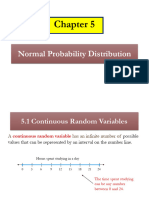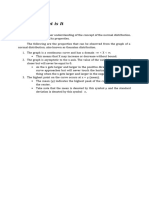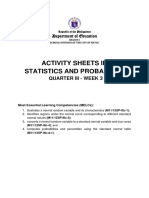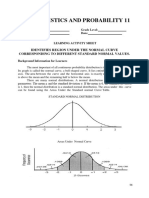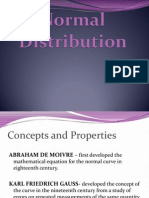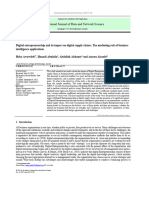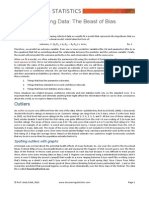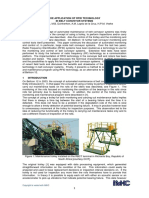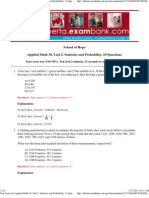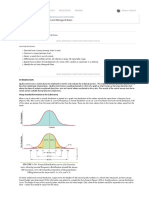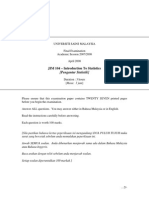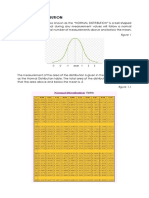0% found this document useful (0 votes)
17 views36 pagesChapter 2 Normal Distributions
The document provides an overview of the normal distribution, including its properties, characteristics, and the standard normal distribution. It explains how to calculate areas under the normal curve and convert normal random variables to standard normal variables using z-scores. Additionally, it includes examples and rules for finding probabilities associated with the normal distribution.
Uploaded by
francosmartinzz34Copyright
© © All Rights Reserved
We take content rights seriously. If you suspect this is your content, claim it here.
Available Formats
Download as PDF, TXT or read online on Scribd
0% found this document useful (0 votes)
17 views36 pagesChapter 2 Normal Distributions
The document provides an overview of the normal distribution, including its properties, characteristics, and the standard normal distribution. It explains how to calculate areas under the normal curve and convert normal random variables to standard normal variables using z-scores. Additionally, it includes examples and rules for finding probabilities associated with the normal distribution.
Uploaded by
francosmartinzz34Copyright
© © All Rights Reserved
We take content rights seriously. If you suspect this is your content, claim it here.
Available Formats
Download as PDF, TXT or read online on Scribd
/ 36











